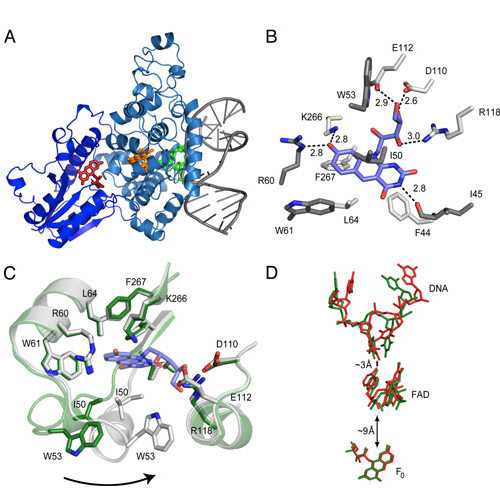The archaeal cofactor F0 is a light-harvesting antenna chromophore in eukaryotes
01-May-2009
PNAS, 2009, 106, 11504-11545 published on 01.05.2009
PNAS, online article
Archae possess unique biochemical systems quite distinct from the pathways present in eukaryotes and eubacteria. 7,8-Dimethyl-8-hydroxy-5deazaflavin (F0) and F420 are unique deazaflavin-containing coenzyme and methanogenic signature molecules, essential for a variety of biochemical transformations associated with methane biosynthesis and light-dependent DNA repair. The deazaflavin cofactor system functions during methane biosynthesis as a low-potential hydrid shuttle F420/F420H2. In DNA photolyase repair proteins, the deazaflavin cofactor is in the deprotonated state active as a light-collecting energy transfer pigment. As such, it converts blue sunlight into energy used by the proteins to drive an essential repair process. Analysis of a eukaryotic (6-4) DNA photolyase from Drosophila melanogaster revealed a binding pocket, which tightly binds F0. Residues in the pocket activate the cofactor by deprotonation so that light absorption and energy transfer are switched on. The crystal structure of F0 in complex with the D. melanogaster protein shows the atomic details of F0 binding and activation, allowing characterization of the residues involved in F0 activation. The results show that the F0/F420 coenzyme system, so far believed to be strictly limited to the archael kingdom of life, is far more widespread than anticipated. Analysis of a D. melanogaster extract and of a DNA photolyase from the primitive eukaryote Ostreococcus tauri provided direct proof for the presence of the F0 cofactor also in higher eukaryotes.











